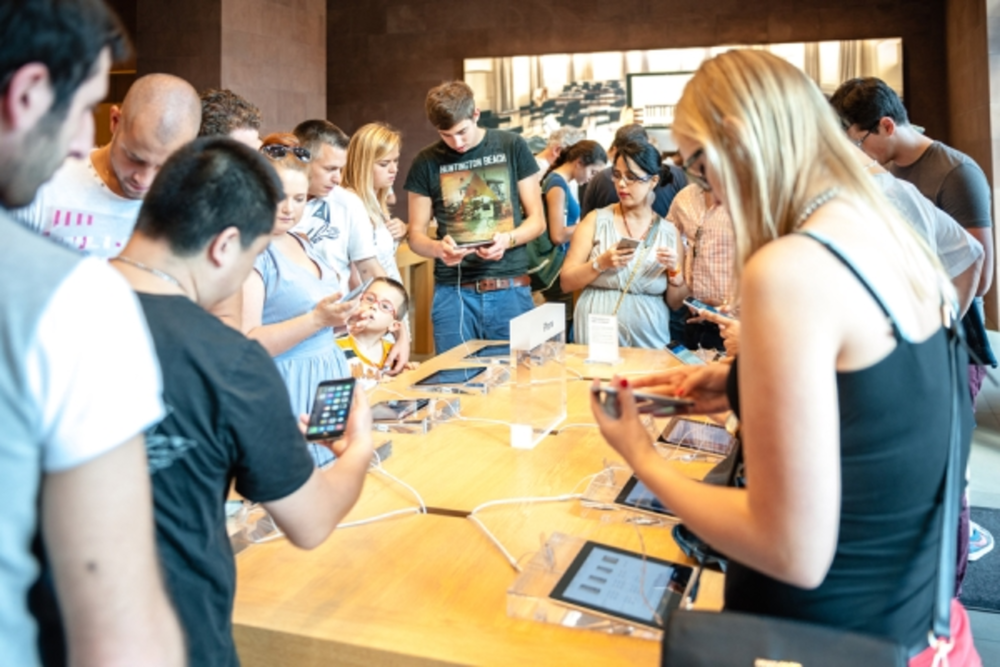When Samsung unveiled its flagship Galaxy Note series in 2011, many questioned the practicality of the (then-) obscenely large screen size. Mobile aficionados debated whether the smartphone-tablet hybrid design would find a foothold during a time where people seemed content with separate phone and tablet experiences. Now, phablets have significantly outpaced every other mobile device in useage growth with a 148% increase in January 2015 over last year, according to new data from Flurry Analytics.
Full-size tablet use fell 20% during the same period, while mini-tablet use grew 14%. Though media consumption tends to trend higher on phablets overall, sports consumption on the form factor rose 427%. Music and entertainment consumption was 255% higher on phablets than any other device, while news and magazine consumption was 172% higher on phablets, according to the study. Phablet use seems to be affecting total time spend on apps as well, with U.S. users spending 88% of their mobile time in app environments and 12% on mobile Web, a 2% variance in both cases compared to last year.
With such a marked shift in mobile consumer culture, marketers may be wondering what, if anything, they should do to address this ostensible evolution of mobile.
For starters:
Understand the phablet movement
Phablets may be catching fire now, but it’s been a slow burn. At first glance, it may appear that the growth of the form factor is largely due to Apple’s iPhone 6 Plus. Such an assumption could prove folly if marketers wade into the phablet community with rhetoric and strategies founded on a basic falsity.
“The rise of the phablet started [on Android], before the iPhone 6 Plus, so we don’t believe that this trend was solely because of the iPhone 6 Plus,” explains Simon Khalaf, VP of Flurry Products at Yahoo. “Of course iPhone 6 Plus has accelerated things, but I would say the phablet rise is independent of [it].”
Leverage the real estate
With phablets, marketers get the screen real estate of tablets or small laptops with the certainty that consumers will have the device with them at all times, which has been one of the inherent gifts of smartphone adaptation. Given phablet devices’ tendency to use stronger hardware, marketers can create more intricate, more interactive mobile experiences.
“More real estate, screen, and storage on any device means a better opportunity to engage with customers, especially through creative ads,” Khalaf notes.
Consider traditional TV approaches to mobile
“Marketers need to think of the phablet as a truly mobile tablet or TV set,” Khalaf says. “Mobile and its apps are resembling TV and TV channels more than the Web and websites.” Herein lies the fundamental shift in thinking that marketers may need in the years to come if they wish to truly leverage the growing app-based mobile ecosystem.
Though such thinking already makes sense in the tablet space, marketers cannot guarantee consumers will leverage the mobility of these devices. With no clear view of whether the app investment will pay off, marketers are often better off with mobile Web-based experiences. However, just as marketers could reasonably expect people watching a channel aligned with their product to be interested in that product, marketers can expect phablet users to have their device at all times. Investing in accelerometers or geolocation technology makes more sense when chances are high that these opportunities to utilize a device’s hardware will result in a better experience for the consumer.
“Phablets and smartphones are with consumers all the time, creating more opportunities to engage customers throughout their day,” Khalaf says.







